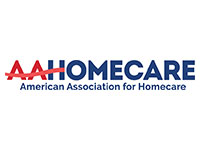AAHomecare Joins Effort to Protect Ostomy Supplies
HME association and other ostomy stakeholders release a new whitepaper aimed at educating payers on why they must protect reimbursement for ostomy supplies.
 The American Association for Homecare has joined several other stakeholders representing healthcare providers and end users of ostomy products to release a white paper designed to educate payers and state Medicaid programs on the value and necessity of those supplies.
The American Association for Homecare has joined several other stakeholders representing healthcare providers and end users of ostomy products to release a white paper designed to educate payers and state Medicaid programs on the value and necessity of those supplies.
An estimated 725,000-1,000,000 individuals in the United States are currently living with an ostomy. These patients need specific products and services needed to successfully manage their bowel and bladder needs in a home-based setting for improved experience and health outcomes while reducing overall cost.
The white paper, The Critical Need to Provide Ostomy Supplies Specific to Patient Need to Improve Health Outcomes, details how HME providers work with the clinical community and end users to deliver supplies and provide education and services.
It also discusses how continued reductions to reimbursements for ostomy supplies jeopardize access to ostomy supplies and services and increase the risk of adverse health outcomes, which increase costs to the payer and/or health system.
AAHomecare joined United Ostomy Associations of America, United Spinal Association, Wound Ostomy and Continence Nurses Society, and Wound Ostomy and Continence Nursing Certification Board to develop the white paper.
“When a person living with a permanent or temporary ostomy does not have access to their prescribed ostomy supplies, the consequences can be severe,” explains James Murray, President of United Ostomy Associations of America, Inc. (UOAA). “Inflamed skin, pouch leaks, and emotional stress are just a few of the outcomes that can have devastating effects on a person’s quality of life.”
“Although it is understandable that state Medicaid, as well as federal Medicare spending programs, are under extreme pressure to control costs while still providing quality outcomes, investments in quality ostomy products are crucial and will ultimately assist in controlling these costs and improving patient outcomes,” said Kate Lawrence, MSN, RN, CWOCN, Public Policy and Advocacy Coordinator for the Wound, Ostomy, and Continence Nurses Society (WOCN). “It is imperative that we continue to educate and advocate on behalf of patients requiring necessary life-saving products and services.”
The white paper requests that payers ensure rates for ostomy products and services are no less than the current corresponding 2021 Medicare fee for service rates for these products.
“It is critical that payers understand the distinct needs of this population and what is required to safely and effectively manage their medical conditions,” noted Laura Williard, Vice President of Payer Relations at the American Association for Homecare. “By providing sustainable reimbursement, the HME community will have the resources to maximize outcomes while ensuring cost-effective payer management.”
To download the white paper, CLICK HERE.